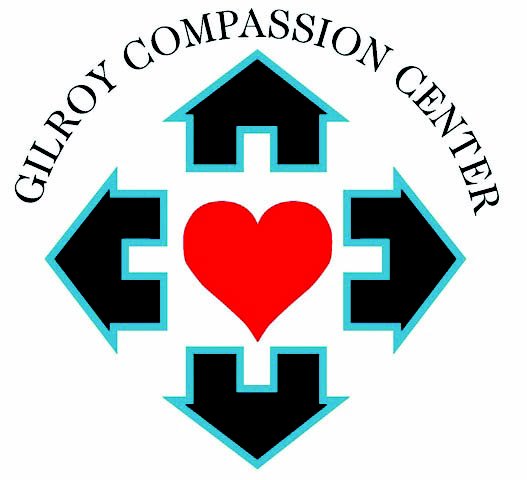They are the women pushing shopping carts full of blankets down Monterey Street. They are the men who sleep under pine trees in Christmas Hill Park. They are the families who give their kids sponge baths in their cars before they head to school.
According to a 2011 survey conducted by Santa Clara County, there are 500 homeless people in Gilroy, and those familiar with the population believe that number is growing.
Homelessness in Gilroy stirred people up once again last week when a dead man police say was homeless man was found lying in a puddle of blood behind a Mi Pueblo foods on First Street. While Gilroy Police have not released any information on how he may have died, they said that he had not been shot or stabbed.
“I see homeless people sleeping here all the time,” said Felix Manuel Chavira, who discovered the body in the parking lot, which shares a fence with his backyard. “I know most of them, they are drinking during the day, and if they start causing trouble I tell them to leave. I worry about my grandkids when they come to visit. I am always outside if they are outside, because anything could happen in a split second.”
As Gilroy’s Nov. 6 election approaches, mayoral candidates Councilman Peter Arellano, Councilman Dion Bracco and Don Gage, Santa Clara Valley Water District board member and former Gilroy mayor – agree that it’s time to examine what the community can do in its efforts to combat the problem.
“The homeless problem isn’t going away,” Bracco said. “One of the things that got me involved is the face of the homeless have changed over the years. It’s not just people who choose to be homeless anymore. Kids would be surprised to learn that some of their classmates are homeless, that they are living in their car.”
But Bracco’s idea of fixing the problem doesn’t involve “throwing government money” at it.
“We have to think out of the box, we have to come with solutions. Government can’t fix it,” he said.
Bracco said one of his main goals, if elected, would be to start an interfaith counsel of religious leaders from different churches and faith communities in Gilroy.
“These folks are uniquely gifted to solve social issues. They are here, and they want to help, they are just waiting for someone to step up and organize them. When you’re dealing with social issues it’s best to let folks like the faith community come to the table to seek solutions,” he said.
In attempts to solve the homeless issue in Gilroy, projects have been started several times in the past few years for homeless shelters that sputtered out before completion, until they ultimately collapsed after the economy tanked in 2008.
The Sobrato Homeless Shelter, a 140-bed homeless shelter envisioned by nonprofit EHC LifeBuilders for the empty lot at 9389 Monterey St. changed hands and direction a few times after the Great Recession, stalling construction for years and leaving residents wondering if the project had been scrapped entirely.
Construction for the project – which is no longer a homeless shelter at all, but a 26-unit subsidized apartment complex that will provide permanent housing for the chronically homeless – is slated to begin in October, according to Dennis Lalor, president of South County Housing, the nonprofit that took over the now-downsized project for EHC LifeBuilders in 2009.
“It was totally restructured because of major changes in our funding, and it became a slow process to work through all that. But it wasn’t for lack of commitment or interest from the community,” Lalor said.
All the funds are now in place to build the complex, known as Gilroy Sobrato Apartments, and should be completed by spring 2013, Lalor said.
“It’s a credit to Gilroy that enough people have recognized that this is an important issue to deal with,” he said. “It’s very gratifying to see it come to fruition.”
Tenants of Gilroy Sobrato Apartments will pay 30 percent of their income, and will be assigned a case manager to help them connect with mental health services, job and computer training, drug and alcohol therapy and financial literacy, said Andy Lief, director of development for South County Housing.
“The emphasis for federal and state funding became more and transitional and permanent housing, which is more of a long-term solution than getting someone a place to sleep,” Lief said.
The permanent housing apartments will be a fraction of the cost as the homeless shelter would have been, with a $150,000 estimated annual operating budget, compared to the $1 million the homeless shelter would have cost to run annually.
Gage, a strong supporter of the Gilroy Sobrato Apartment project, said in the community’s efforts to curb homelessness, housing meets a need that a mere bed-and-shower homeless shelter cannot.
“Unless you provide housing you’ll just have more problems. Just doing a shelter is not going to solve anything,” Gage said. “So many homeless people have drug and mental problems, and you have to have services that cater to that aspect as well. They need something more than a bed and a shower.”
Gage said there was a time that the homeless community used to mainly be people who “wanted that lifestyle,” but the reality of a bad economy has filtered down in recent years and changed that norm.
“Now it’s families who have been foreclosed on, and men who have lost their jobs,” he said.
With South County Housing halting their plans for a shelter, the community decided to step up on their own.
In a grassroots vision that came about in 2010 after local business owner Jim Currier decided to donate his industrial warehouse on Monterey Street and Wren Avenue rent-free for five years to help kick off a vision of a year-round shelter in Gilroy known as the Compassion Center.
The community came around the Compassion Center project, and helped establish a board of directors – which Bracco sits on – and worked to attain official nonprofit status as well as a group of loyal core volunteers.
The center currently offers homeless people a place to connect with job search services and a clothing closet. The building also provides a place to host quarterly homeless connect events, in which 20 social services booths show up to hook homeless people up with appropriate services. The next event is Sept. 14.
The dream of converting the warehouse to a year-round shelter, however, hinges on a hefty $750,000 in funding need to upgrade the building to code.
“It is going to take a lot of community awareness,” said Rachel Sanchez-Parodi, Compassion Center board member and volunteer.
In light of the recent death of a homeless man, Sanchez-Parodi said it would be better for the safety of the whole community if Gilroy had a year-round shelter, not just the emergency shelter that opens up at the Gilroy Armory on Wren Avenue for the winter months.
“People sleep in parking lots and bushes because there is nowhere else to go. It would be better for everybody to have somewhere for them to sleep, rather than in backyards,” Sanchez-Parodi said.
Arellano believes there is no easy solution to homelessness in Gilroy, but as mayor, would stand strongly for taking care of the homeless community.
“I don’t think any government body has been able to solve the problem. But I do know we can not just turn a blind eye. And we cannot just ship them on a bus over to the next city.”
Arellano is a supporter of both the Sobrato housing project and the Compassion Center, but said no matter what the community tries to do to alleviate homelessness, Gilroy will always have the homeless.
“We can work to make it better, and we can work to house the homeless,” Arellano said. “We can try, but it is not a reachable goal to have zero homeless people. The truth is, we will always have people sleeping in the streets.”














